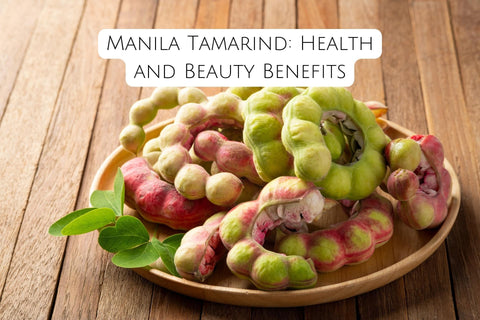Singhara is a type of water chestnut that is commonly found in India, Pakistan, and other parts of South Asia. It is a nutritious, starchy vegetable that is often used in traditional dishes. Singhara is also known by other names such as water caltrop, Singhara nut, and water chestnut. It grows in aquatic environments and has a hard, brown outer shell with a white, crunchy flesh inside. The flesh of the singhara is rich in carbohydrates, protein, and various nutrients such as potassium, iron, and vitamin C. It is often eaten raw, cooked, or ground into flour and used in various recipes. Singhara is also believed to have medicinal properties and is used in traditional medicine to treat a variety of ailments.
Nutritional Value of Singhara:
Singhara is a nutritious vegetable that is rich in carbohydrates and protein, as well as various essential nutrients. Here is a summary of the nutritional content of singhara per 100 grams (based on data from the United States Department of Agriculture):
- Calories: 92
- Protein: 2.1 grams
- Total fat: 0.2 grams
- Carbohydrates: 22.5 grams
- Fiber: 1.9 grams
- Sugar: 1.3 grams
- Sodium: 11 milligrams
Singhara is also a good source of various nutrients, including:
- Potassium: 243 milligrams
- Iron: 0.8 milligrams
- Vitamin C: 11 milligrams
Keep in mind that the nutritional content of singhara may vary depending on factors such as the variety, growing conditions, and preparation methods.
Properties of Singhara: 
Singhara is believed to have several medicinal properties that may be beneficial for health. Here are some of the potential properties of singhara:
- Diuretic: Singhara is believed to have diuretic properties, which means that it may help increase the production of urine and promote the removal of excess water from the body. This may be useful for people with conditions such as edema (fluid accumulation) or high blood pressure.
- Antioxidant: Singhara is a good source of antioxidants, which are substances that can help protect the body against the harmful effects of free radicals.
- Anti-inflammatory: Some research suggests that singhara may have anti-inflammatory properties, which means that it may help reduce inflammation in the body. Inflammation is a natural response of the immune system to infection, injury, or other forms of tissue damage. Chronic inflammation is thought to play a role in the development of various diseases, including heart disease, diabetes, and cancer.
Potential Uses of Singhara for Overall Health: 
- As a food: Singhara can be eaten raw, cooked, or ground into flour and used in various dishes. It is a good source of carbohydrates, protein, and various nutrients such as potassium, iron, and vitamin C.
- Diabetes management: Singhara has a low glycemic index, which means it does not cause a rapid rise in blood sugar levels. This makes it a good food choice for people with diabetes who need to carefully manage their blood sugar levels.
- Weight loss: Singhara is low in calories and high in fiber, which can help with weight loss by making you feel full and satisfied after eating.
- Digestive health: The high fiber content of singhara can help improve digestive health by promoting regular bowel movements and reducing the risk of constipation.
- Brain health: Singhara is a good source of antioxidants, which can help protect brain cells from damage caused by free radicals. This may help improve brain function and reduce the risk of age-related cognitive decline.
- Skin health: Singhara is a rich source of Vitamin E, which is an important nutrient for healthy skin. Vitamin E can help protect the skin from oxidative stress and may help reduce the appearance of scars and other blemishes.
Potential Uses of Singhara for weight management:
- As a low-calorie, low-fat food: Singhara is relatively low in calories and fat, making it a good choice for people who are trying to manage their weight. One hundred grams of singhara contains approximately 92 calories and 0.2 grams of fat, which is lower than many other starchy vegetables.
- As a source of fiber: Singhara is a good source of dietary fiber, which is a type of carbohydrate that is not absorbed by the body. Fiber helps keep you feeling full and satisfied, which can help prevent overeating and promote weight loss.
- As a source of complex carbohydrates: Singhara is a good source of complex carbohydrates, which are longer chains of sugars that are absorbed more slowly by the body. Complex carbohydrates provide sustained energy and may help regulate blood sugar levels, which can be beneficial for weight management.
Potential Uses of Singhara for digestion:
- As a source of fiber: Singhara is a good source of dietary fiber, which is a type of carbohydrate that is not absorbed by the body. Fiber helps bulk up the stool and promotes regular bowel movements, which can help prevent constipation and improve digestion.
- As a prebiotic: Some research suggests that singhara may have prebiotic properties, which means that it may help stimulate the growth of beneficial bacteria in the gut. Beneficial bacteria are important for maintaining a healthy balance of microorganisms in the digestive system and may help support overall digestive health.
- As a digestive aid: Singhara is believed to have digestive properties and may be helpful in relieving digestive issues such as bloating, gas, and indigestion. However, more research is needed to confirm these potential benefits and to determine the appropriate dosage and usage.
Potential Uses of Singhara for diabetes:
- As a low-glycemic food: Singhara has a low glycemic index (GI), which is a measure of how quickly a food raises blood sugar levels. This may be beneficial for people with diabetes, who need to manage their blood sugar levels to prevent high or low blood sugar episodes.
- As a source of complex carbohydrates: Singhara is a good source of complex carbohydrates, which are longer chains of sugars that are absorbed more slowly by the body. Complex carbohydrates provide sustained energy and may help regulate blood sugar levels, which can be beneficial for people with diabetes.
- As a source of fiber: Singhara is a good source of dietary fiber, which is a type of carbohydrate that is not absorbed by the body. Fiber helps slow down the absorption of sugars in the bloodstream, which may be beneficial for people with diabetes.
Potential Uses of Singhara for cholesterol:
- As a low-fat food: Singhara is relatively low in fat, with only 0.2 grams of fat per 100 grams. Choosing low-fat foods such as singhara can help reduce the intake of saturated and trans fats, which are known to increase cholesterol levels.
- As a source of fiber: Singhara is a good source of dietary fiber, which is a type of carbohydrate that is not absorbed by the body. Soluble fiber has been shown to help lower cholesterol levels by binding to cholesterol in the intestine and preventing its absorption into the bloodstream.
- As a source of plant sterols: Some research suggests that singhara may contain plant sterols, which are plant-based compounds that can help lower cholesterol levels by blocking the absorption of cholesterol in the intestine.
Potential Uses of Singhara for skin diseases: 
Some traditional medicinal systems suggest that singhara may have skin-protective and soothing properties and may be used to treat various skin conditions such as rashes, allergies, and burns. However, there is little scientific evidence to support these claims, and more research is needed to determine the safety and effectiveness of singhara for skin conditions.
Side Effects of Singhara:
Here are some potential side effects of singhara:
- Interactions with medications: Singhara may interact with certain medications, including blood thinners, blood pressure medications, and diuretics. It is important to consult a healthcare professional before using singhara or any other herbal remedies if you are taking any medications.
- It is always a good idea to consult a healthcare professional before using singhara or any other herbal remedies during these stages of life.
Precautions to Take with Singhara:
Here are a few precautions to take when using singhara:
- Consult a healthcare professional: It is always a good idea to consult a healthcare professional before using singhara or any other herbal remedies, especially if you have a medical condition or are taking any medications. A healthcare professional can help you determine if singhara is safe and appropriate for you and can provide guidance on dosage and usage.
- Use caution if you have allergies: If you have allergies or a history of allergic reactions, it is important to be cautious when using singhara or any other herbal remedies. Singhara is a member of the water chestnut family and may cause allergic reactions in some people. If you experience any symptoms of an allergic reaction after consuming singhara, such as rash, hives, itching, swelling, or difficulty breathing, stop using it and seek medical attention immediately.
- Eat singhara in moderation: Singhara is generally considered safe when consumed as a food in moderate amounts. However, eating large amounts of singhara or consuming it on an empty stomach may increase the risk of digestive side effects such as bloating, gas, and diarrhea. It is important to eat singhara in moderation as part of a well-balanced diet.
- Store singhara properly: Singhara should be stored in a dry, cool place and should be kept away from direct sunlight and moisture. If singhara is not stored properly, it may become contaminated or spoiled, which can cause food poisoning. It is important to handle and store singhara safely to reduce the risk of foodborne illness.
By taking these precautions, you can help ensure that you are using singhara safely and appropriately.




Comments (0)
There are no comments for this article. Be the first one to leave a message!